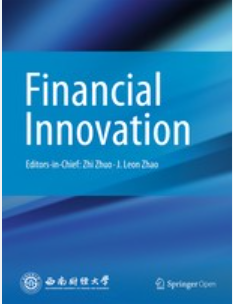比特币交易的无监督聚类
IF 7.2
1区 经济学
Q1 BUSINESS, FINANCE
引用次数: 0
摘要
自 2009 年诞生以来,比特币已成为目前最成功、使用最广泛的加密货币。它引入了区块链技术,允许用户之间以不可更改的方式在线进行资金转移交易。区块链中不需要或不存储现实世界中的身份信息。同时,所有交易都是公开的、可审计的,这使得比特币成为一个伪匿名的交易账本。每天广播的交易量相当大。我们提出了一套可从交易数据中提取的特征。在此基础上,我们应用数据处理管道,通过 k-means 聚类算法,最终根据交易属性对交易进行聚类。最后,根据这些属性,我们能够对这些聚类及其包含的交易进行特征描述。我们的工作与以往研究的主要区别在于,它采用了一种无监督学习方法对交易而不是地址进行聚类。利用我们引入的新特征,我们的工作将交易分为多个群组,而之前的研究仅尝试二元分类。结果表明,大多数交易都属于可被描述为普通用户交易的聚类。其他群组包括在线交易所和借贷服务的交易、与采矿活动有关的交易以及更小的群组,其中一个群组包含可能的非法或欺诈交易。我们对照一个在线数据库对我们的结果进行了评估,发现我们的结果与已知行为者(如在线交易所)的地址基本一致,这增强了我们方法的有效性。本文章由计算机程序翻译,如有差异,请以英文原文为准。
Unsupervised clustering of bitcoin transactions
Since its inception in 2009, Bitcoin has become and is currently the most successful and widely used cryptocurrency. It introduced blockchain technology, which allows transactions that transfer funds between users to take place online, in an immutable manner. No real-world identities are needed or stored in the blockchain. At the same time, all transactions are publicly available and auditable, making Bitcoin a pseudo-anonymous ledger of transactions. The volume of transactions that are broadcast on a daily basis is considerably large. We propose a set of features that can be extracted from transaction data. Using this, we apply a data processing pipeline to ultimately cluster transactions via a k-means clustering algorithm, according to the transaction properties. Finally, according to these properties, we are able to characterize these clusters and the transactions they include. Our work mainly differentiates from previous studies in that it applies an unsupervised learning method to cluster transactions instead of addresses. Using the novel features we introduce, our work classifies transactions in multiple clusters, while previous studies only attempt binary classification. Results indicate that most transactions fall into a cluster that can be described as common user transactions. Other clusters include transactions made by online exchanges and lending services, those relating to mining activities as well as smaller clusters, one of which contains possibly illicit or fraudulent transactions. We evaluated our results against an online database of addresses that belong to known actors, such as online exchanges, and found that our results generally agree with them, which enhances the validity of our methods.
求助全文
通过发布文献求助,成功后即可免费获取论文全文。
去求助
来源期刊

Financial Innovation
Economics, Econometrics and Finance-Finance
CiteScore
11.40
自引率
11.90%
发文量
95
审稿时长
5 weeks
期刊介绍:
Financial Innovation (FIN), a Springer OA journal sponsored by Southwestern University of Finance and Economics, serves as a global academic platform for sharing research findings in all aspects of financial innovation during the electronic business era. It facilitates interactions among researchers, policymakers, and practitioners, focusing on new financial instruments, technologies, markets, and institutions. Emphasizing emerging financial products enabled by disruptive technologies, FIN publishes high-quality academic and practical papers. The journal is peer-reviewed, indexed in SSCI, Scopus, Google Scholar, CNKI, CQVIP, and more.
 求助内容:
求助内容: 应助结果提醒方式:
应助结果提醒方式:


